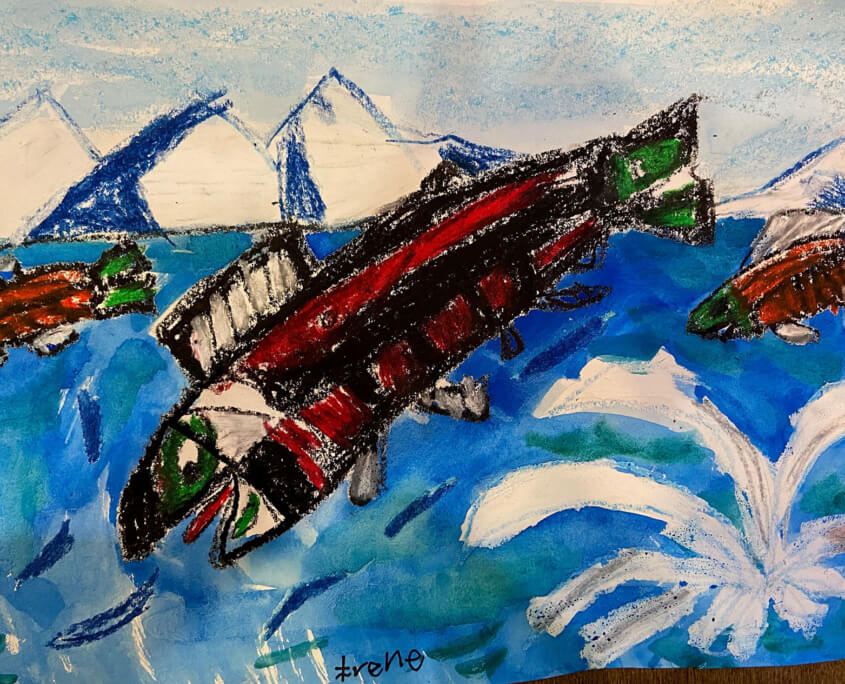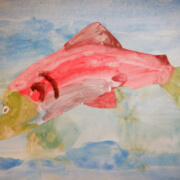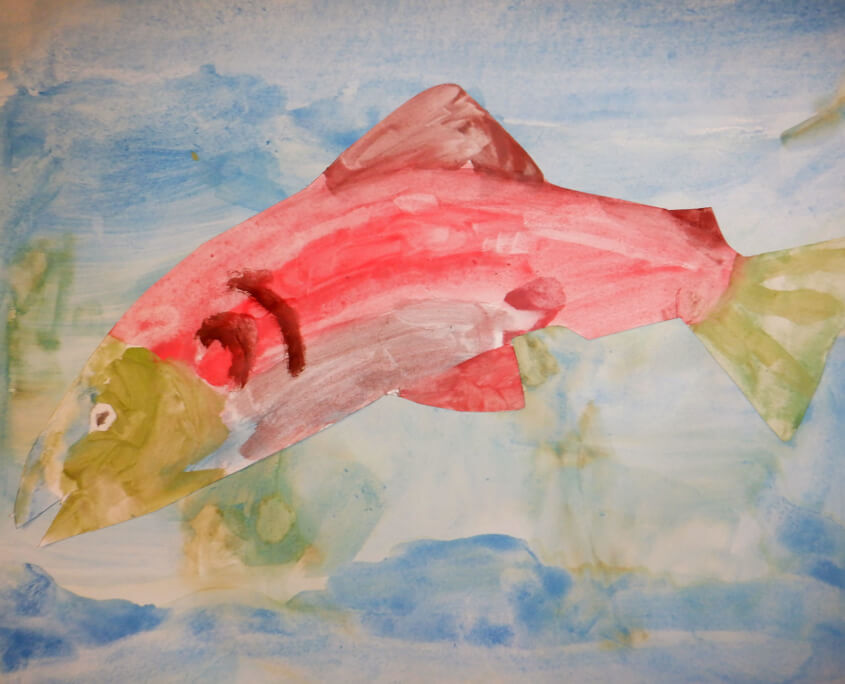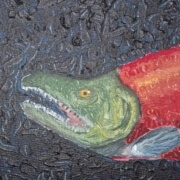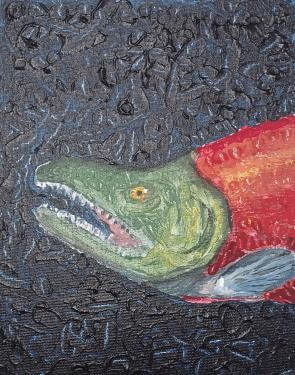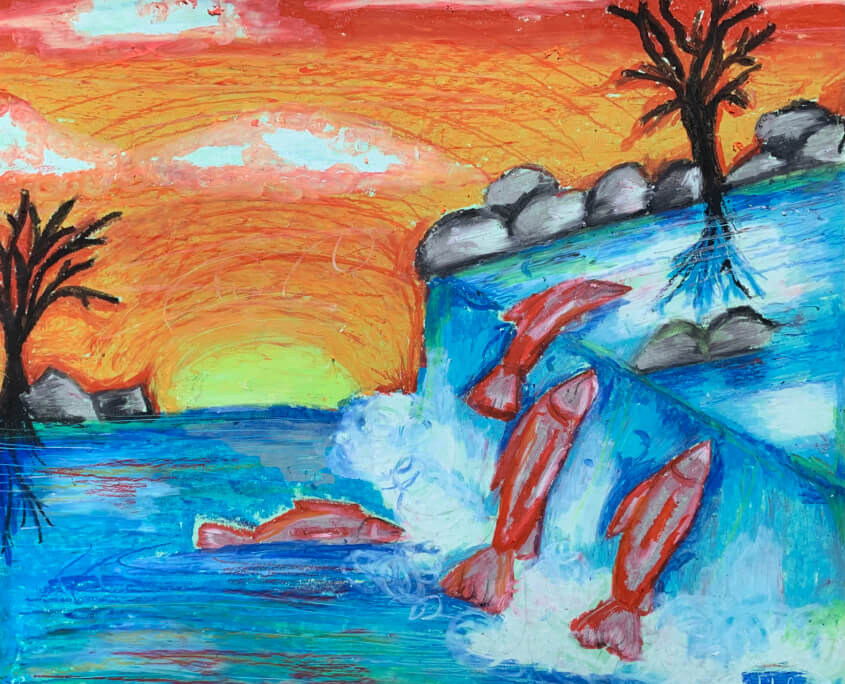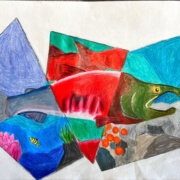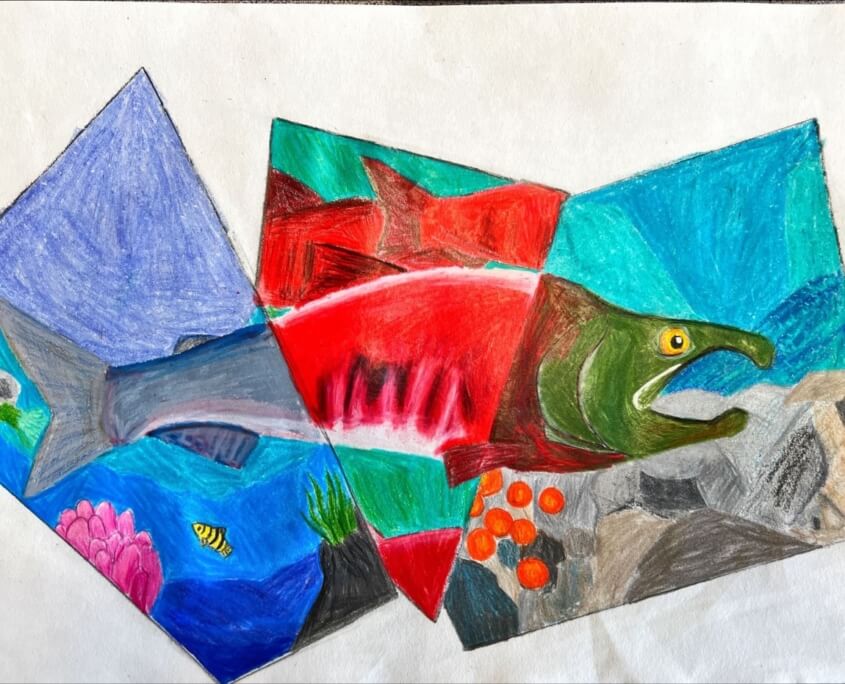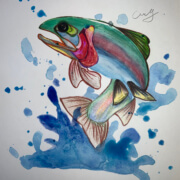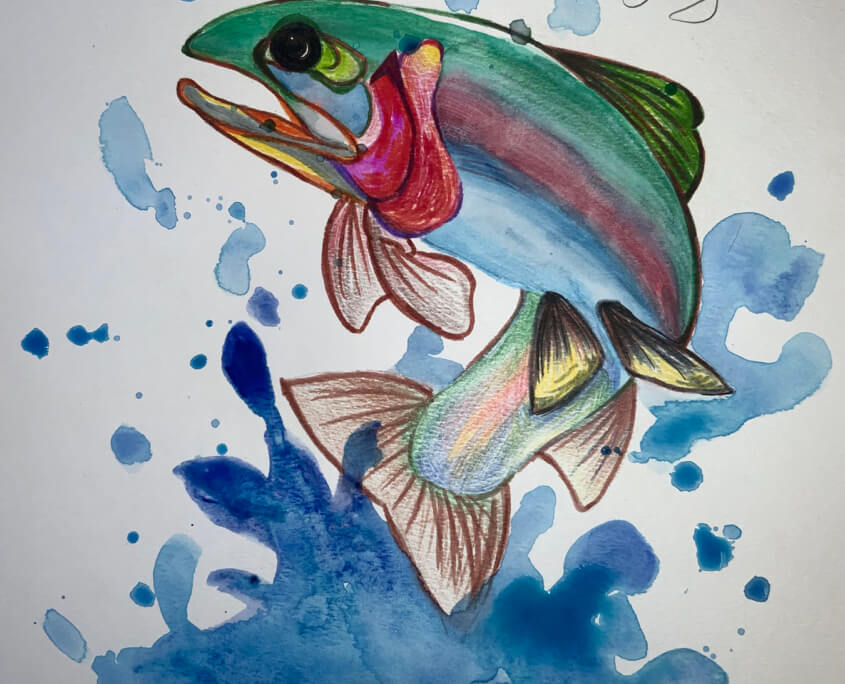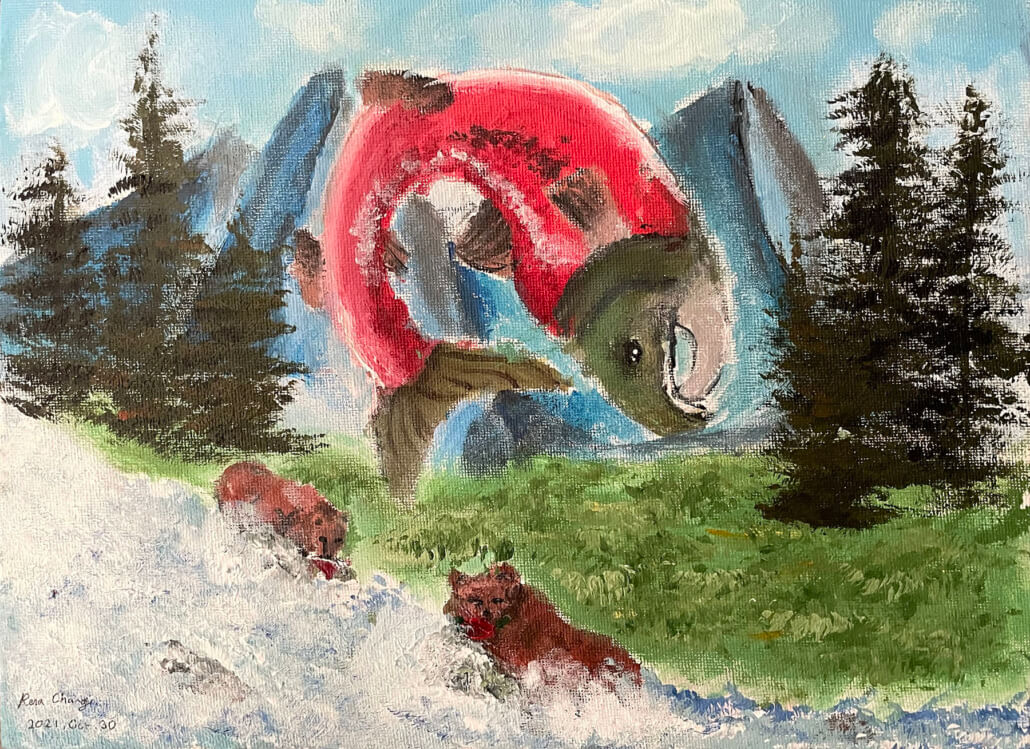2021 Year in Review
Earlier this year we asked kids from across B.C. to be inspired by salmon and send in their best salmon art. Here are just a few of the over 200 submissions we received.
There is reason to have hope for Pacific salmon populations in B.C. and the Yukon thanks to you. As we reflect on a year of extreme climate events that escalated the threats to salmon, it’s equally as important to celebrate the highlights, the progress, and the people who are advancing game-changing research, projects, and habitat restoration.
With you on our side, the team here at PSF made considerable progress. Highlights include:
- PSF launched the Climate Adaptation Program. Work kicked off this spring tracking migration impediments in the Lower Fraser in collaboration with the Yale and Matsqui Nations. A Forest Fire Recovery Playbook is in development to outline key recovery steps for aquatic environments/salmon habitat after forest fires.
- PSF launched the Resilient Coasts for Salmon initiative – a five-year program to raise awareness for nature-based solutions along our coasts that will improve salmon and forage fish habitat while protecting coastlines from rising sea levels and more extreme storm surges.
- The Salmon Watersheds Program developed a Story Map and Planning Tool to assist Lower Fraser Fisheries Alliance with a habitat restoration plan for the river/estuary.
- The Marine Science Program mapped invasive European green crab spread in B.C. and engaged the public to help identify and report the species, in collaboration with DFO.
- The Percy Walkus Hatchery led another successful egg-take this year, retrieving approximately 300,000 eggs, supporting the conservation of Chinook salmon from the Wanukv, Kibella and Chuckwalla Rivers, with thanks to the Wuikinuxv Nation.
- The Salmon Watersheds Program expanded the Pacific Salmon Explorer (PSE) to Haida Gwaii, adding information on 765 salmon populations to the tool. With the Haida Gwaii addition, the PSE now visualizes data and status assessments for 90% of Wild Salmon Policy conservation units across B.C.
- The Marine Science Program developed action plans to protect/restore salmon productivity, including aquatic plant mapping and thermal-tolerant kelp applied research with UVic and Seachange.
- The Salmon Ecological Health Program published a study that shows Piscine orthoreovirus, which is associated with kidney and liver damage in Chinook salmon, is continually being transmitted between open-net salmon farms and wild juvenile Chinook salmon in British Columbia waters. The team is actively monitoring sea-lice on and around open net pen fish farms in the Broughton.
- The Salmon Watersheds Program published the Central Coast Monitoring and Stewardship Framework with Central Coast First Nations and DFO, leading to development of an Escapement Monitoring Tool– built in collaboration with Central Coast Nations to support strategic planning of escapement monitoring.
- The Community Salmon Program granted nearly $1.3 million to 114 projects in 65 communities across B.C. and the Yukon supporting habitat restoration, education, stewardship and conservation hatcheries
At the heart of this progress are people, our staff here at PSF, the incredible partners we work with, volunteer stewards in watersheds across B.C., and donors.
As we look ahead to 2022, we are filled with hope thanks to the passion that People for Salmon bring each day to help at-risk species recover, and to uphold populations that are doing well. The state of salmon is serious, and it will take all of us to help these resilient creatures thrive.

